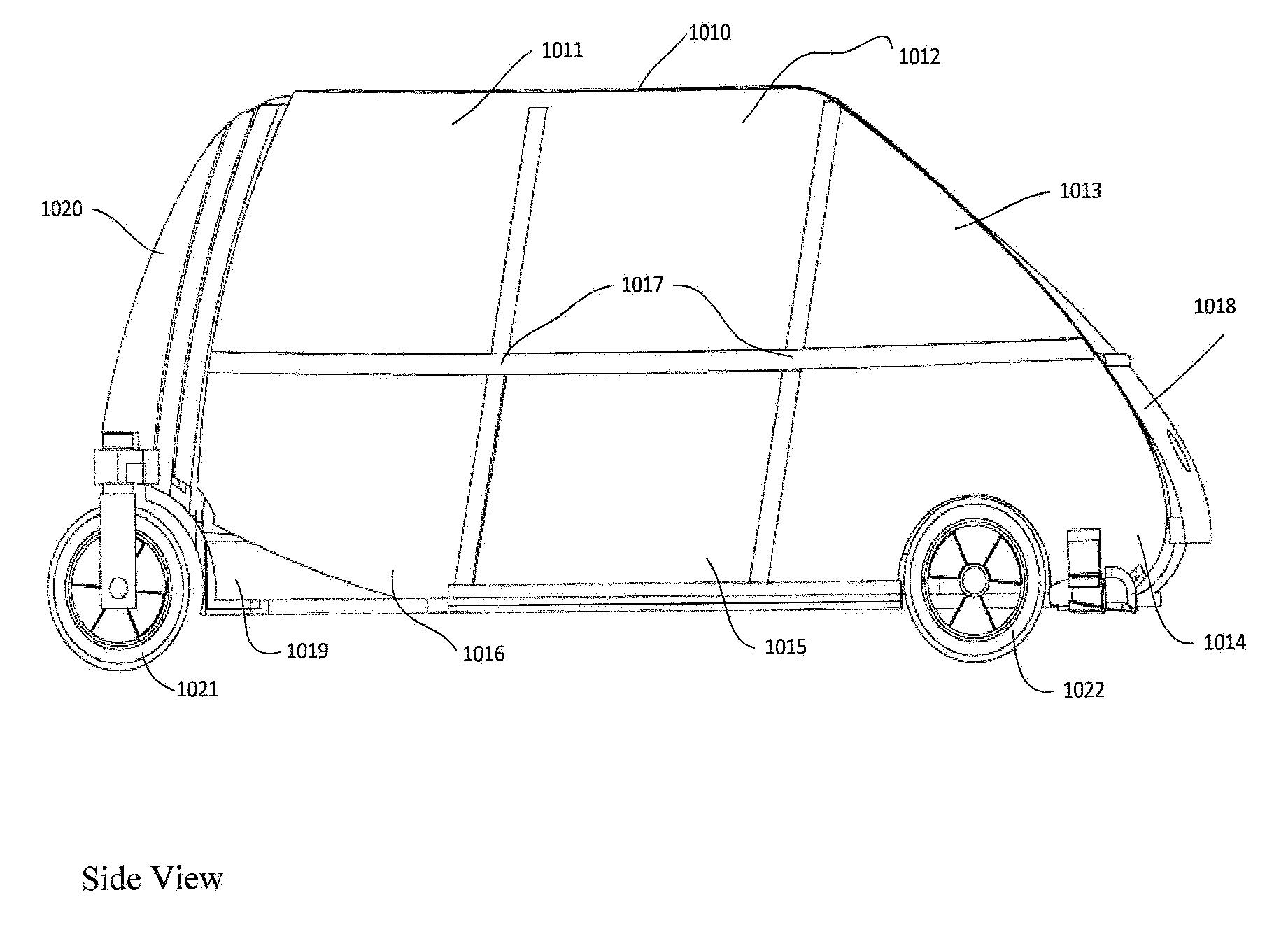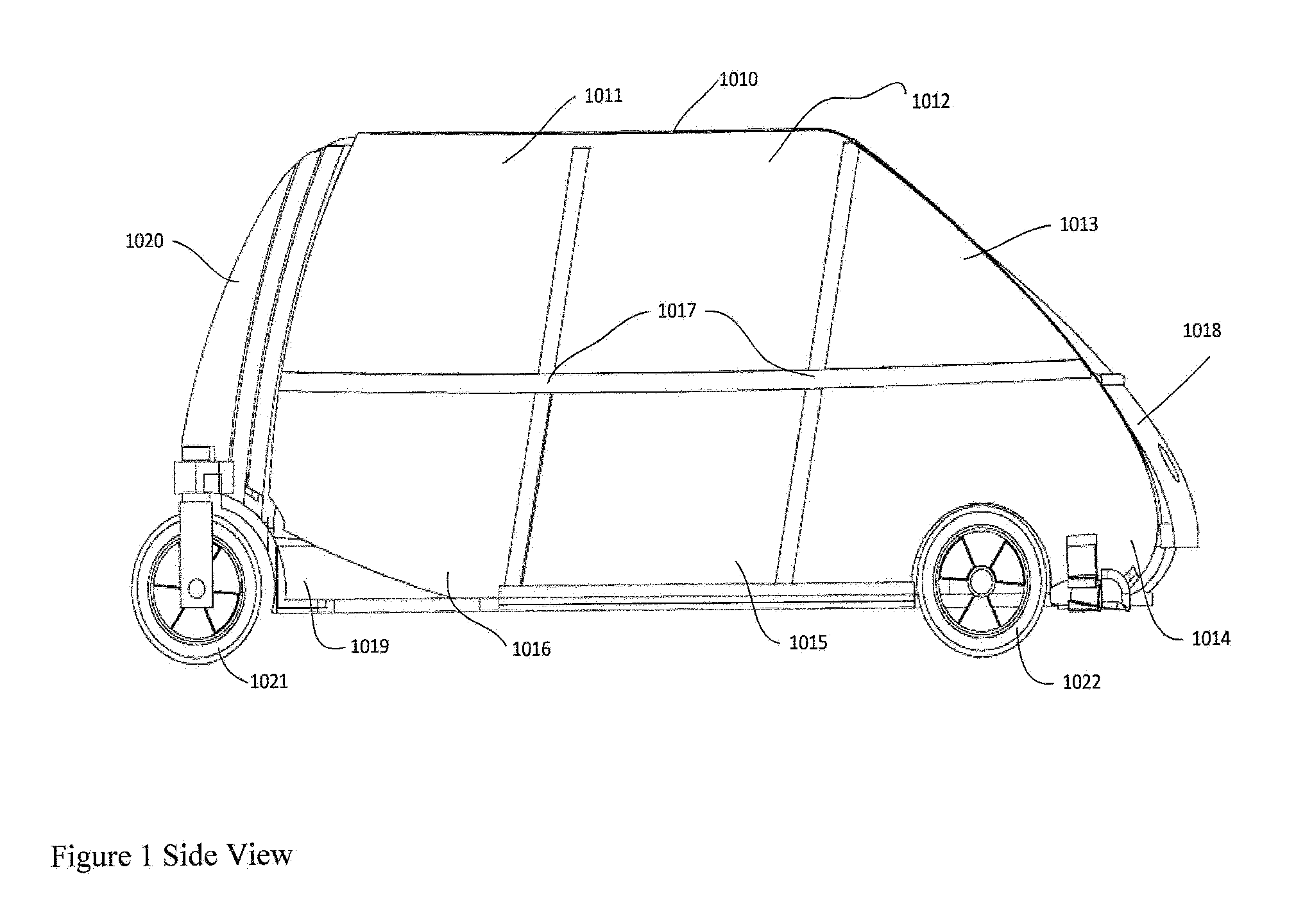Solar Electric Vehicle with Foldable Body Panels on a Sun Tracking Chassis
a solar electric vehicle and chassis technology, applied in the field of vehicles, can solve the problems of ineffective photovoltaic (pv) electricity generation on board vehicles, limited surface area of vehicles, and most often exposed vehicles to the sun, and achieve the effects of high efficiency electricity generation, convenient transportation, and effective integration of sun tracking solar electricity generation
- Summary
- Abstract
- Description
- Claims
- Application Information
AI Technical Summary
Benefits of technology
Problems solved by technology
Method used
Image
Examples
Embodiment Construction
[0030]In FIGS. 1-5 various perspectives of the Monarch EV are shown with same labels on the same components in these Figures. We describe the structure of the vehicle with most of the description of the design and functions explained in later sections.
[0031]In FIG. 1, we show the right side of the vehicle. The large surface of the side [1010] comprises a parabolic surface. In one implementation, the surface comprises six separate panels [1011-1016] supported by T bar framing [1017]. The front hood [1018] serves as an entrance to the vehicle. The chassis has a bottom plate [1019] providing base support, and a back lift [1020] providing back support as well as solar elevation tracking. The front wheels [1022] and a single back wheel [1021] are all steerable, for the purposes of locomotion steering as well as solar azimuth tracking.
[0032]In FIG. 2, we show the top and bottom views. The roof [1023] provides also the function of solar energy collection from the underside as sunlight is r...
PUM
 Login to View More
Login to View More Abstract
Description
Claims
Application Information
 Login to View More
Login to View More - R&D
- Intellectual Property
- Life Sciences
- Materials
- Tech Scout
- Unparalleled Data Quality
- Higher Quality Content
- 60% Fewer Hallucinations
Browse by: Latest US Patents, China's latest patents, Technical Efficacy Thesaurus, Application Domain, Technology Topic, Popular Technical Reports.
© 2025 PatSnap. All rights reserved.Legal|Privacy policy|Modern Slavery Act Transparency Statement|Sitemap|About US| Contact US: help@patsnap.com



